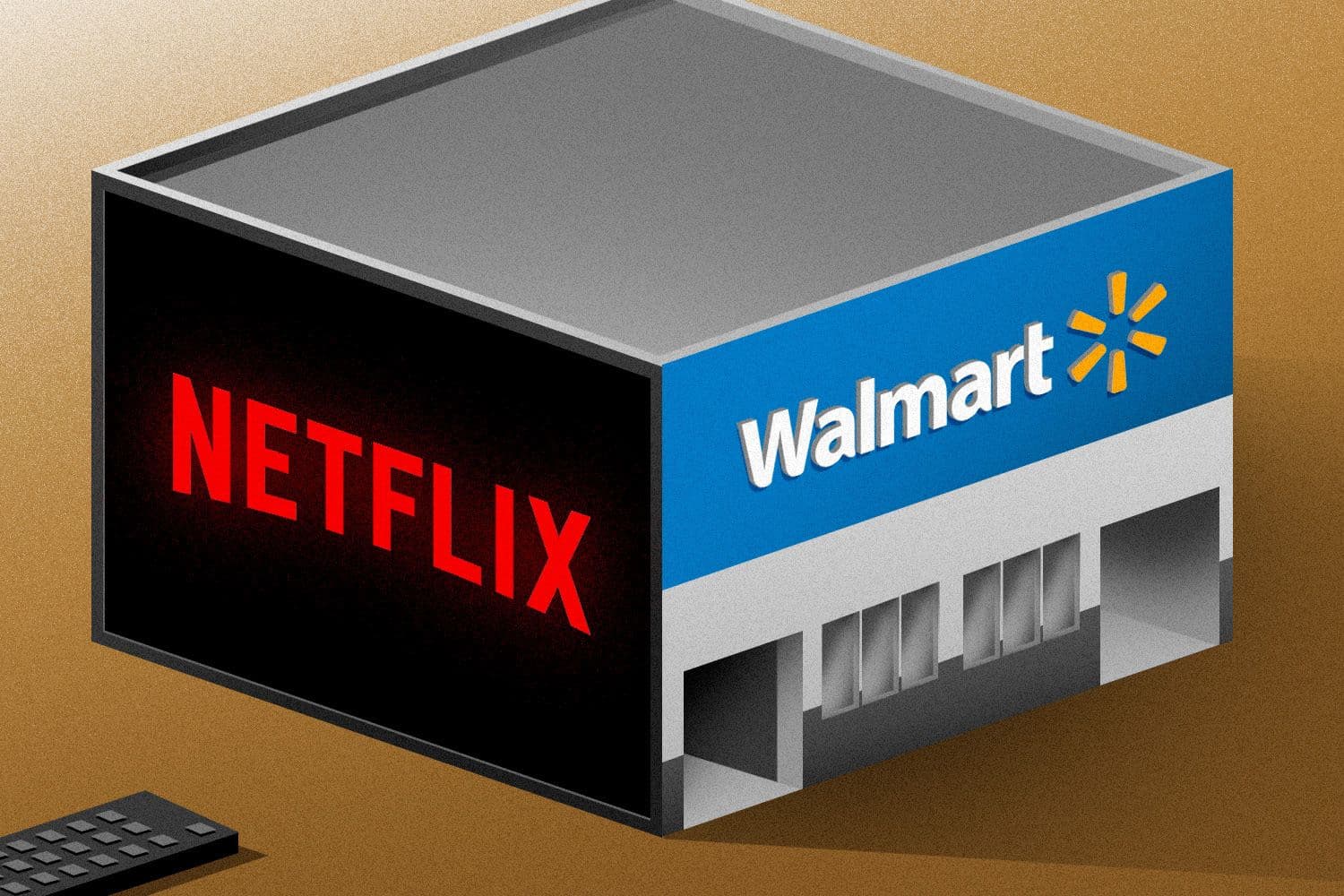Why companies like Netflix see store shelves as a place to connect with customers
Consumer goods “reinforce and celebrate fan love” while driving retail sales, executives say.

Francis Scialabba
• 5 min read
Entertainment and commerce: They’re a match made in heaven.
Don’t believe us? Maybe you’ll listen to former Amazon CEO Jeff Bezos, who once said that “when we win a Golden Globe, it helps us sell more shoes.” Or Disney, which is reportedly considering building out shopping features to live inside Disney+. Or Walmart, which has struck various deals with Netflix, Paramount+, Roku, and NBCUniversal this year in an attempt to win over shoppers with membership perks, exclusive products, and new ways to purchase goods.
Partnerships between streamers and retailers have taken many forms, as the former looks for ways to boost scale and the latter looks to attract customers to stores and websites. The reasoning is simple. Entertainment companies and retailers alike are battling for customer loyalty month after month—so why not use one to boost the other?
“Content can be a driver, which is much stronger and much better than standard advertising as we know it,” explained Anthony Goonetilleke, the group president of technology and head of strategy at the software firm Amdocs, which works with media and communications companies.
Netflix 🤝 Walmart
Netflix has found a recent friend in Walmart. Just this year, the company, which has branched out into online storefronts and pop-up shops, established in-store hubs inside 2,400 Walmart stores, an extension of an existing online storefront on Walmart.com that sells products tied to its shows.
Partnering with Walmart gets the Netflix brand in front of lots of eyeballs. Around 90% of the 331.9 million people living in the US live within 10 miles of a Walmart store, the retailer has estimated, and Netflix, which counts more than 73 million subscribers in the US and Canada, is presumably looking to connect with its existing subscriber base and attract new sign-ups wherever it can. (Globally, the streamer has 223 million subs.)
“We want to reach our consumers and members where they are,” Josh Simon, Netflix’s VP of consumer products, told Marketing Brew. “Whether that’s online or in stores, we want to make it easier for them to engage with the films and series that they love.”
Entertainment giants often use consumer products in an attempt to boost fandom and consumer engagement, which is often seen as key to reducing customer churn. Netflix does not disclose revenue generated from consumer product sales.
“Revenue is only one measure,” Simon told us. “The real value in these products and our live experiences [is] they help to reinforce and celebrate fan love for the shows and films living on Netflix.”
Get marketing news you'll actually want to read
Marketing Brew informs marketing pros of the latest on brand strategy, social media, and ad tech via our weekday newsletter, virtual events, marketing conferences, and digital guides.
Other recent retail partnerships are designed to ideally increase service stickiness without taking up space on store shelves. Walmart+, the retailer’s membership program that offers free shipping and special deals for $98 a year, began offering free access to streamer Paramount+ in September as part of an entertainment-retail bundle; other partnerships this fall with Roku and NBCUniversal enable shoppers to buy from Walmart directly from TV screens with shoppable ad formats and livestreams.
Those kinds of relationships continue to close the gap between TV content and commerce, Goonetilleke explained.
Off the shelf
Retailers have a chance to grow, too, if they look to capitalize on the fan love for popular shows and movies. If retailers bring merchandise related to TV hits to their sites and storefronts, that can give customers another reason to frequent their store instead of a competitor’s.
“Content drives purchasing, which drives momentum in the market, which drives back to people watching content,” Goonetilleke said. “If you can grab onto a franchise, like a Game of Thrones, and have exclusive Funko Pop figures or whatever it is, and start to tie it back to the shelves, start to tie it back to the store, you drive foot traffic. You can drive e-commerce traffic.”
Not every retailer or streamer is using external partnerships as a way to capitalize on the opportunity. Amazon’s Prime Video, which comes at no additional cost as part of an Amazon Prime subscription, used programming tentpoles this fall, including Thursday Night Football, to encourage purchases of NFL merchandise and apparel with discounts only available to Prime members.
That’s because New York Giants fans, for example, don’t just want to watch games— they may want to buy jerseys or other branded merchandise to deepen their relationship with their favorite team, Jared Goldsmith, Prime Video’s acting head of sports marketing, said.
The same can be said for viewers of big-swing programming like The Lord of the Rings: The Rings of Power, who Amazon expects may want to buy the books, listen to the soundtrack on Amazon Music, or listen to a behind-the-scenes podcast on Audible.
“It’s all in service of connecting audiences to the things that they love in different ways so that they can get deeper,” Greg Coleman, global head of franchise marketing at Amazon Studios, said. “All of it combines and creates this package where customers get what they want.”
Watch our episode of Marketing Brew Weekly where we dive deep into Netflix House!
Get marketing news you'll actually want to read
Marketing Brew informs marketing pros of the latest on brand strategy, social media, and ad tech via our weekday newsletter, virtual events, marketing conferences, and digital guides.